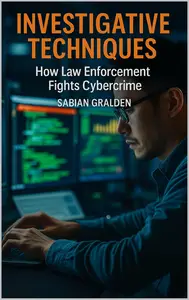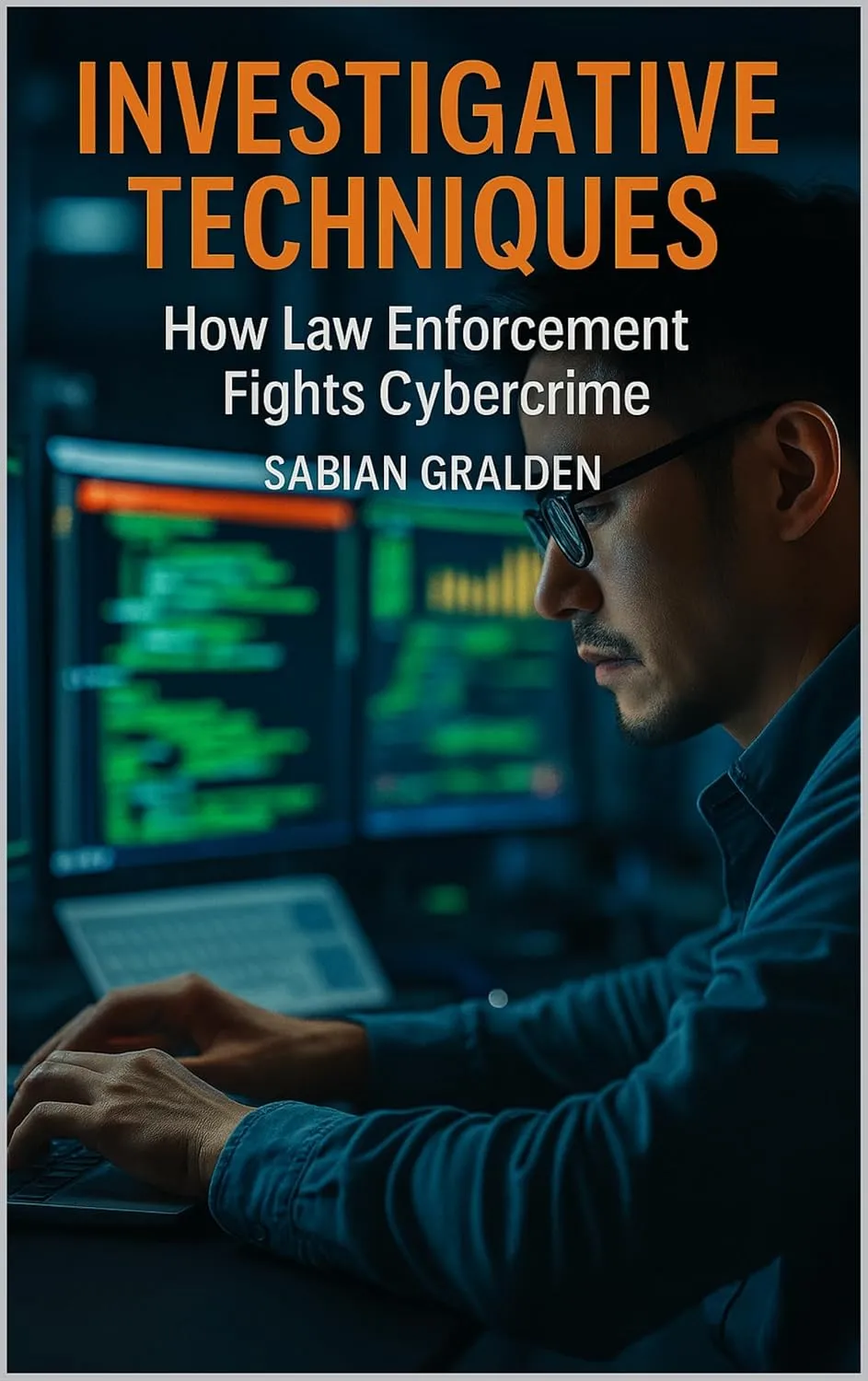Investigative Techniques: How Law Enforcement Fights Cybercrime by Sabian Gralden
English | August 6, 2025 | ISBN: N/A | ASIN: B0FLMVSD2C | 89 pages | EPUB | 1.31 Mb
English | August 6, 2025 | ISBN: N/A | ASIN: B0FLMVSD2C | 89 pages | EPUB | 1.31 Mb
Cybercrime is the new frontier of global crime—and fighting it requires more than just strong firewalls and antivirus software. It demands sharp minds, sophisticated tools, and an evolving arsenal of investigative techniques. In Investigative Techniques: How Law Enforcement Fights Cybercrime, cybercrime analyst and author Sabian Gralden takes readers behind the digital curtain into the fast-paced, high-stakes world of modern cybercrime investigation.
This book explores how today’s law enforcement professionals confront cybercriminals who leave no fingerprints, operate across borders, and weaponize code instead of guns. From international hacking collectives and ransomware cartels to state-sponsored espionage and cryptocurrency-fueled fraud, Gralden breaks down the most pressing threats—and the innovative strategies used to track and neutralize them.
Through ten comprehensive chapters, readers will learn how digital forensics reconstructs virtual crime scenes; how network traffic analysis reveals hidden communications; and how open-source intelligence (OSINT) can expose hackers’ identities through their online footprints. You’ll explore how malware is dissected, how covert agents infiltrate dark web marketplaces, and how financial analysts trace laundered funds across the blockchain. You'll also see how artificial intelligence is becoming an indispensable force multiplier in the investigative toolkit—and how international cooperation is essential to pursue justice in a borderless digital world.
Each chapter is grounded in real-world case studies and explained in clear, accessible language. Whether you're a cybersecurity student, a criminal justice professional, or a curious reader seeking to understand how the internet's darkest corners are policed, this book offers a detailed, eye-opening journey through the digital battlefield.
Chapters include:
- Digital Forensics and Evidence Collection – Recovering deleted files, tracing system logs, and preserving volatile data for court-admissible evidence.
- Network Traffic Analysis – Using packet sniffers and flow data to detect command-and-control infrastructure and trace attacker movements.
- Malware Analysis and Reverse Engineering – Deconstructing malicious code to understand its behaviour, goals, and authorship.
- Open-Source Intelligence (OSINT) Gathering – Leveraging publicly available information to connect digital identities to real-world personas.
- Collaboration and Information Sharing – How cross-sector partnerships and global coalitions like Interpol and Europol drive effective cyber investigations.
- Cyber Threat Intelligence (CTI) – Anticipating future threats by profiling adversaries and tracking their evolving tactics, techniques, and procedures (TTPs).
- Covert Operations and Undercover Work – Penetrating cybercriminal forums through online personas and high-risk infiltration.
- Financial Tracing and Cryptocurrency Analysis – Following the money trail, even through anonymized blockchain transactions and crypto laundering schemes.
- Leveraging Artificial Intelligence (AI) and Machine Learning (ML) – Harnessing big data analytics and anomaly detection to shorten response times and surface hidden patterns.
- Legal Frameworks and International Law Enforcement Coordination – Understanding how digital crime is prosecuted across jurisdictions, and how treaties, warrants, and diplomatic channels support cross-border enforcement.



